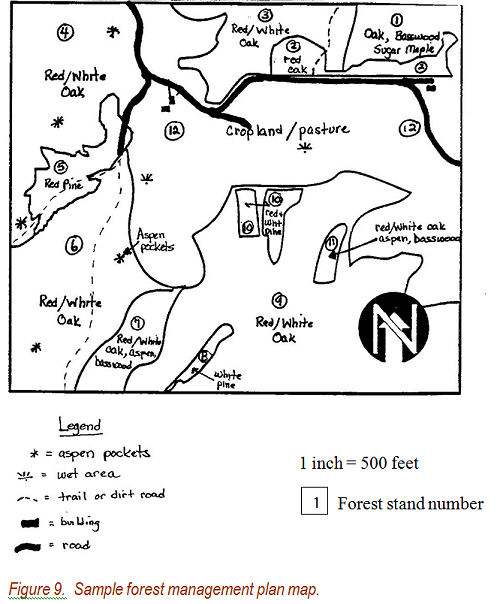| Introduction | Forest Types | |
| Forest Characteristics | Management | |
| Forest Contributions | Special Considerations | |
| The Forest Plan | Assistance |
![]()
FOREST MANAGEMENT GUIDELINES FOR MICHIGAN |
| Introduction | Forest Types | |
| Forest Characteristics | Management | |
| Forest Contributions | Special Considerations | |
| The Forest Plan | Assistance |
![]()
FOREST MANAGEMENT GUIDELINES FOR MICHIGAN |
The Importance of a Forest Management Plan Though forests can provide clean water, fuelwood, recreation, timber, wildlife and scenic value in numerous combinations, any action taken at one time may affect available choices for years to come. Forest planning can integrate and optimize management of all these forest attributes. Forest planning is the process of comparing the forest owner’s ideas with the current condition of the woodlot and the inherent capabilities of the forest to provide goods and services on a sustainable basis. This comparison will consider any obligations or constraints pertaining to the forest owner and the property. This is the first step in active forest management, which may include timber harvesting, tree and shrub planting for timber production or wildlife habitat, or even the creation of forest openings to enhance diversity. All forest owners have a plan, even if it is simply how they imagine their woodlot in the future. The advantage of a formal written plan is that it can more easily address complex considerations and resolve possible inconsistencies and conflicts between desired outcomes. A written plan is an excellent way to convey one’s vision of the property to the next generation. It also serves as a helpful reminder of our vision of the future. Management plans are useful when one participates in conservation programs, Tree Farm or other sustainable management schemes, Michigan’s property tax relief programs, or carbon trading. |
||
Forests are dynamic and management plans must be adaptable to changing forest and market conditions. For this reason, all forest plans need to be monitored, evaluated, and periodically updated to ensure forest conditions have not changed and that the plans are still relevant. Forest owners should consider the advice and assistance of professional foresters and other resource professionals when developing a forest plan. The scope, detail, timetable, cost, and funding of the forest plan should be agreed upon prior to its preparation. Forest owners should also consider the amount of time and financial resources required to implement provisions laid out in the plan. |
 |
|
|

This website is maintained by Bill Cook, Michigan State University Extension
Forest in the Upper Peninsula. Comments, questions,
and suggestions are gratefully accepted.
Last update of this page was 9 January, 2014
This site is hosted by School of Forest Resources and Environmental Science at Michigan Technological University.